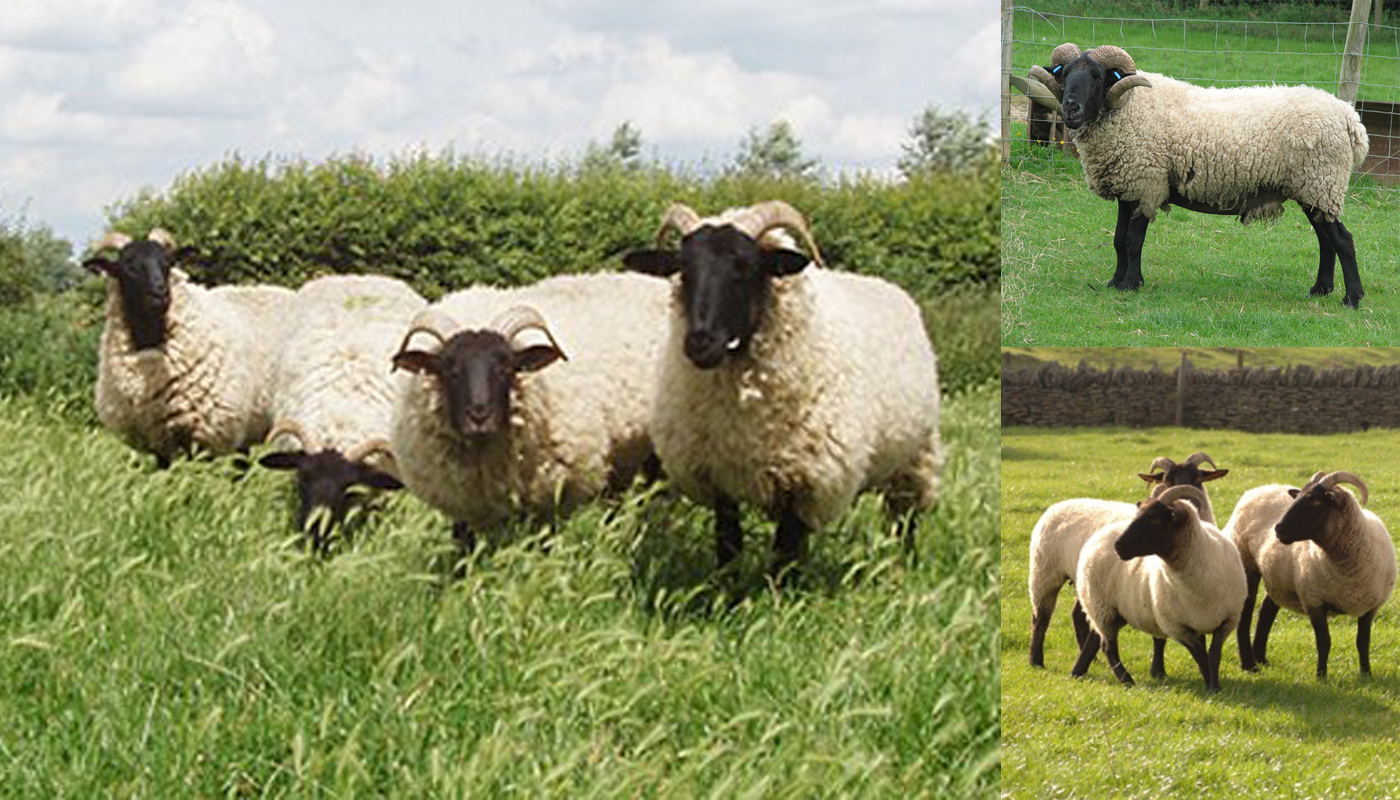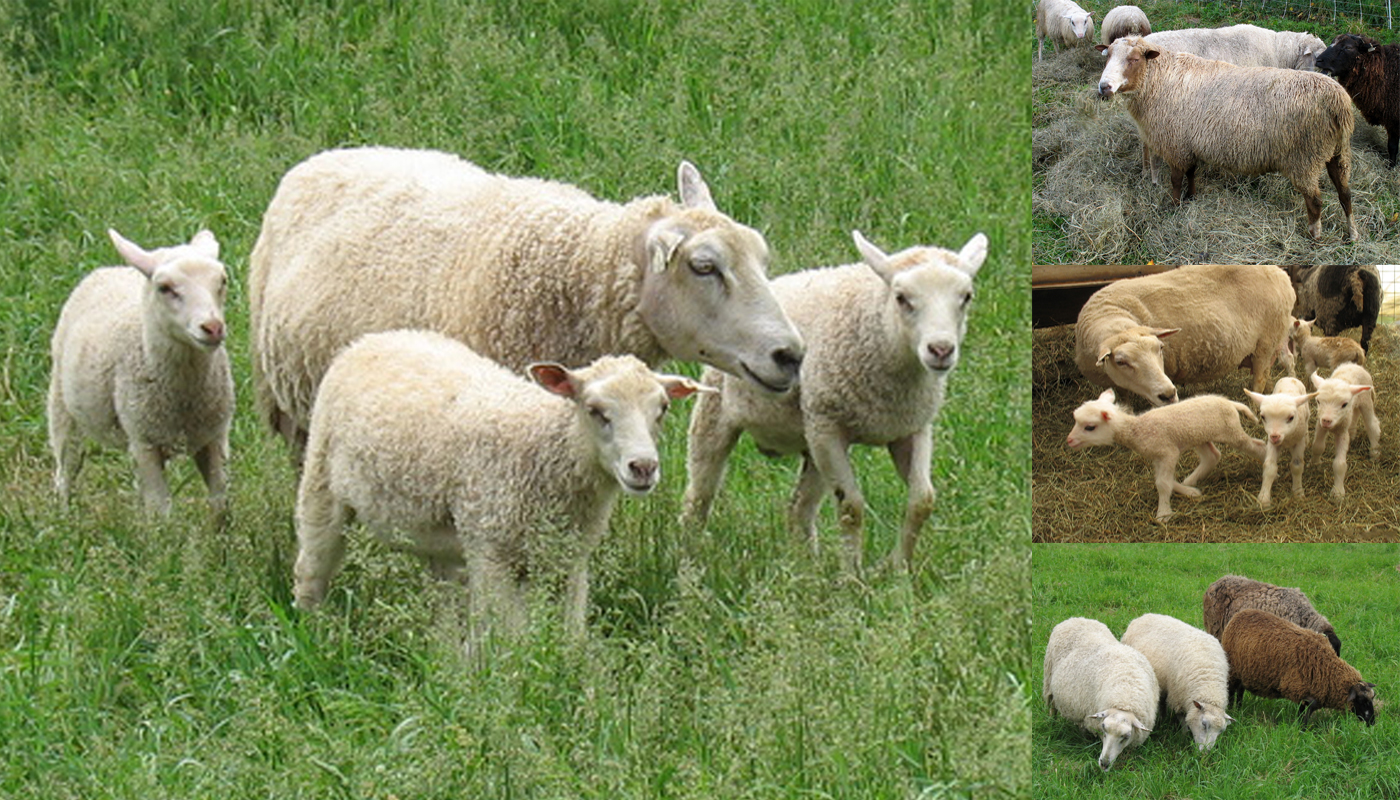
The Ryeland sheep have been in Britain for over seven centuries. Their wool was once revered by Queen Elizabeth, who after trying a pair of stocking made for the Ryeland wool insisted she only ever wore stocking made from their fleece.
They are a big teddy bear looking sheep with their thick soft wool coat covering them from their heads to hoof. They are a dual-purpose breed that produce great wool sough after by hand spinners and weaver alike. They also produce a high-quality tasty meat that meets all the requirements of today’s markets.
RYELAND SHEEP QUICK PROFILE OVERVIEW |
|
|---|---|
| Strong, sturdy with a long straight back and wool from head to hoof. They are big teddy bear looking sheep | |
| Country of Origin: | United Kingdom |
| Other Names: | None |
| Breed Size: | Medium to large |
| Main Purpose: | Meat and wool |
| Can be used for | Breed, **LSC, Meat, Wool |
| Temperament: | Docile and easy to handle |
| Ideal Climate: | Heat, Cold, Most climates |
| Health Issues? | No known health issues |
| Good Starter Sheep? | Novice to intermediate level of sheep farmer/keeper |
| Sheep Associations: | Ryland Flock Book society |
| Sheep Clubs: | Please refer to the Ryland Flock Book society members/breeders directories for more information |
| Note: *ALC stands for American Livestock Conservancy ** LSC stands for Landscape Management – the animal is used for controlling various vegetation growth |
|
PHYSICAL CHARACTERISTICS |
||||||||||||||||||||||||||||||||
|---|---|---|---|---|---|---|---|---|---|---|---|---|---|---|---|---|---|---|---|---|---|---|---|---|---|---|---|---|---|---|---|---|
| They are a strong, hardy breed with a fine carriage and well sprung ribs and covered with wool from the face down to their hooves. They look like cuddly woolen teddy bears! They have a long back, powerful back legs and a broad tail. | ||||||||||||||||||||||||||||||||
| Color(s): | White but sometimes the ewes do have lambs of various colors, these are called “colored Ryelands” | |||||||||||||||||||||||||||||||
|
||||||||||||||||||||||||||||||||
EWE BREEDING & MILKING INFORMATION |
|
|---|---|
| The ewes breed once a year and mostly produce enough milk to wean their lambs. They are quite good milkers with excellent maternal instincts that will protect their young a all costs. | |
| Breeding Period/cycle: | Usually lasts 24 to 36 hours |
| Estrous cycle: | Ave. 17 days/13 to 19 days |
| Gestation Period: | Usually, around 150 to 155 days but most gestation is 152 days |
| No. Lambs/Litter: | 1 to 2 (twins) per birth some mature ewes can even have triplets |
| Lactation Period: | Usually, around 150 to 240 day but most are milked for 180 days |
| Milking From: | 4 to 6 weeks after lambing |
| Milk Quality: | Good |
| Milk Ideal for: | Lambs |
| You may Also Like: | 10 Best Sheep Breeds for Milk |
SHEEP MEAT PRODUCTION INFORMATION |
|||||||
|---|---|---|---|---|---|---|---|
| The Ryeland sheep breeds meat was once called “the sweet meat of Herefordshire”. They produce a tender succulent tasty excellent quality lamb. Their meat is sought after by various chefs and butchers. | |||||||
| Meat Production: | Yes, Quality: Excellent | ||||||
|
|||||||
| You may Also Like: | 11 Best Sheep Breeds for Meat Production | ||||||
SHEEP WOOL PRODUCTION INFORMATION |
||||||||||||||||
|---|---|---|---|---|---|---|---|---|---|---|---|---|---|---|---|---|
| The Ryeland sheep is one of the “downs-type” wool sheep. It is a short-woolled sheep that was once prized for its exquisite wool stockings. | ||||||||||||||||
| Wool Production? | Yes, Quality: Bradford count of 56 to 58 | |||||||||||||||
| Wool is used to Produce: | Quality knits, stocking, hand spinners, weavers and even teddy bears | |||||||||||||||
|
||||||||||||||||
| You may Also Like: | 18 Best Wool Producing Sheep Breeds | |||||||||||||||
SHEEP SKIN PRODUCTION INFORMATION |
|||||||
|---|---|---|---|---|---|---|---|
| They are not primarily bred for their sheep skin production. Although their skin is or has at some time been used for the production of some form of sheep skin product such as chamois, etc. | |||||||
| Skin Production? | N/A | ||||||
| Skin is used to Produce: | Kid skin leather products such as shoes, car seats, fine leather coats, gloves, etc. Chamois cloths, leather goods such as seats, shoes and other garments and leather materials such as furniture, etc. |
||||||
|
|||||||
GOOD TO KNOW ABOUT THE ROMNEY SHEEP |
|
|---|---|
| A few more interesting facts to know about the breed | |
| Child-Friendly? | No livestock should be left unattended around unsupervised children |
| Landscape Management? | They are great for landscape management |
| Where to buy them? | Please refer to the Ryland Flock Book society members/breeders directories for more information |
| General Information: | The Ryeland Flock Book Society was established in 1903. The Society is for the registration, information and breeders of the Ryeland sheep breed.
Ryeland sheep are the oldest established British sheep breed and were bred by monks from Leominster in Hereford Britain. The Ryeland sheep were famous for their wool and the Lemster wool was prized above all other wool in England. |
HISTORY
The Ryeland sheep are one of the oldest of the British breeds of sheep. Their heritage goes back to the monks of Leominster in Herefordshire almost seven centuries ago. The monks used to breed sheep that were grazed out on the rye pastures and hence the sheep breeds name Ryeland sheep.
They were believed to have the finest of all sheep wool as Queen Elizabeth herself would only use wool stockings that were made from “Lemster” wool.
The first reported importation of Ryeland sheep into America was made in the summer of 1907 by Mr. George McKerrow who at the time resided in Pewaukee, Wisconsin. There are not that many, if any, Ryeland sheep found in the USA today.
Video
USEFUL LINKS
- United States Lamb Resource Center
- American Sheep Industry Association
- American Sheep Industry Association List of Breed Associations & Standards
- American Milk Sheep Association
- Dairy Sheep Association of North America
- American Wool Council
- Fur Commission USA
- North American Meat Institute
- American Lamb Board
- National Lamb Feeders Association
- American Livestock Conservancy
- Animal Shelter (ASPCA)
- American Veterinary Medical Association
- American Animal Welfare Society
- American Animal Control
- American Animal Husbandry Society
- United States Department of Agriculture
 10 Hair Sheep Breeds
10 Hair Sheep Breeds Polypay Sheep Breed – Everything You Need to Know
Polypay Sheep Breed – Everything You Need to Know Merino Sheep Breed – Everything You Need to Know
Merino Sheep Breed – Everything You Need to Know Norfolk Horn Sheep Breed – Everything You Need to Know
Norfolk Horn Sheep Breed – Everything You Need to Know St. Croix Sheep Breed – Everything You Need to Know
St. Croix Sheep Breed – Everything You Need to Know Finnsheep Sheep Breed – Everything You Need to Know
Finnsheep Sheep Breed – Everything You Need to Know American Tunis Sheep Breed – Everything You Need to Know
American Tunis Sheep Breed – Everything You Need to Know Barbados Black Belly Sheep Breed – Everything You Need to Know
Barbados Black Belly Sheep Breed – Everything You Need to Know Scottish Blackface Sheep Breed – Everything You Need to Know
Scottish Blackface Sheep Breed – Everything You Need to Know Cotswold Sheep Breed – Everything You Need to Know
Cotswold Sheep Breed – Everything You Need to Know Hampshire Sheep Breed – Everything You Need to Know
Hampshire Sheep Breed – Everything You Need to Know Shetland Sheep Breed – Everything You Need to Know
Shetland Sheep Breed – Everything You Need to Know